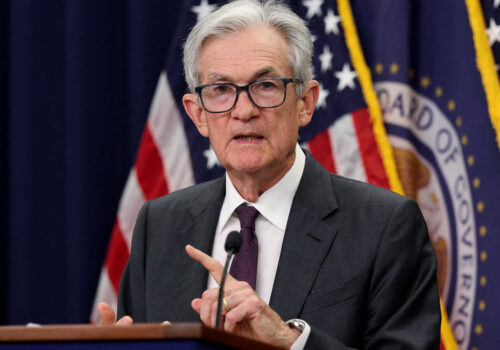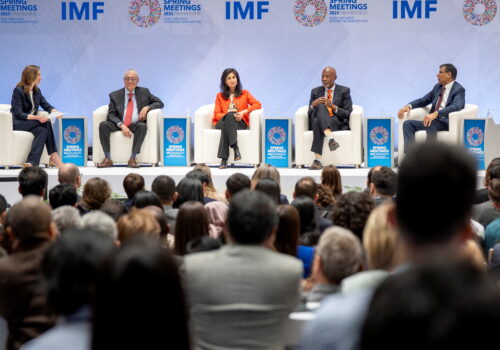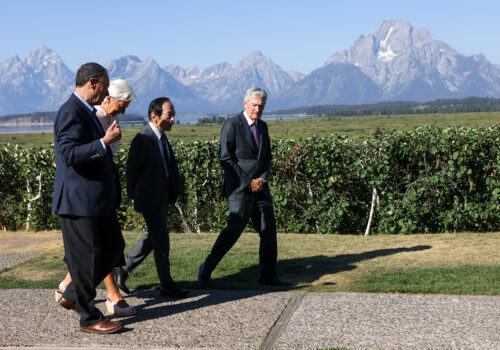Trump’s economic agenda is set to collide with the Supreme Court
US President Donald Trump’s economic agenda is now set on a collision course with the Supreme Court. In the coming weeks the court will likely have to weigh in on both Trump’s unprecedented use of emergency powers to levy tariffs on the world and his escalating war with the Federal Reserve. The justices’ decisions in these cases will either constrain or unleash the president’s attempts to remake the US and global economy and will reverberate well beyond his term.
First, the Federal Reserve. On Monday night, Trump attempted to fire Federal Reserve Governor Lisa Cook based on an allegation of mortgage fraud. If successful, it would be the first time in the 112-year history of the Federal Reserve that a governor had been fired. Cook was appointed to the Fed by President Joe Biden in 2022. Her Senate-confirmed term isn’t scheduled to end until 2038. The predicate for her firing came from the Trump-appointed director of the Federal Housing Finance Agency, Bill Pulte, who seems to have pulled her mortgage paperwork prior to her time at the Fed. In a letter to the US attorney general dated August 15, Pulte claimed Cook listed two different properties as her primary residence. US Department of Justice attorney Ed Martin followed up by writing to Fed Chair Jerome Powell: “I encourage you to remove Ms. Cook from your Board. Do it today before it is too late!”
Since there has never been an attempted firing of a Fed governor, Powell is creating the precedent here.
Powell declined to respond, and Trump went through with the attempted firing. Cook quickly replied that she would not step down and that the president did not have the legal authority to fire her. The next step will be to see what Powell does. He sidestepped the issue of central bank independence during his final speech at the Jackson Hole Symposium last week, likely hoping the summer battles were behind him. Now he has to decide whether to allow Cook to continue to serve as a governor while the case goes through the judicial system. Most likely, Cook will be granted an injunction—but whether she can continue to show up to work, especially heading into the next Fed interest rate decision in two weeks, is up to Powell. Since there has never been an attempted firing of a Fed governor, Powell is creating the precedent here.
Of course, even if Powell allows Cook to serve while the case moves forward, that only temporarily addresses the issue. Ultimately the Supreme Court will have to rule on whether the president can fire a federal reserve governor under these circumstances. In May, the Supreme Court created a special carve-out for the Fed, saying that while the president can fire the leadership of most independent agencies, the Federal Reserve is uniquely structured and occupies a standalone place in US history, and therefore the president can only fire a Fed official “for cause.” The question that will come before the court is whether a so-far unproven allegation about mortgage applications done before her service at the Fed actually constitutes “for cause.” If the court allows the firing to go forward, it would increase Trump’s control over the Fed—and put every other Fed governor on notice. It would be a dangerous break from the independence of central banking that helped the dollar become the world’s reserve currency and stabilized both the US and global economy throughout recessions, depressions, and financial crises. Ultimately, as similar situations in emerging markets have taught us, a central bank that is not independent leads to higher inflation and faltering economies.
The Fed decision comes on top of what is already the biggest economic case expected to come before the court in years—whether the president is allowed to use the International Emergency Economic Powers Act (IEEPA) to put tariffs on allies and adversaries alike. Many of Trump’s tariffs so far in his second term, including the reciprocal tariffs issued on “Liberation Day” and since modified in July, rely on the IEEPA. In order to use the 1977 law to issue tariffs, the president had to declare a national emergency.
The primary national emergency claimed by the president is the trade deficit, which raises several legal issues. First, IEEPA never mentions tariffs and has historically been used for sanctions. So the courts are now debating whether the powers of IEEPA can be extended to trade in the way Trump is trying. The second and related question is whether tariffing is a power reserved to Congress under Article I, and whether the president has overstepped his authority. The third question is, does the national emergency cited here meet the intention of the law—is a chronic trade deficit actually a national emergency? Fourth, even if there is a national emergency, are tariffs the appropriate remedy? The president has also cited fentanyl trafficking as the justification for tariffs on Canada and Mexico, and the courts have questioned how tariffs would address that concern. There are several cases right now making their way through the system, but it seems clear that the Supreme Court will have to weigh in on one of them soon. So far, the lower courts have been very skeptical of Trump’s legal authorities here, and a unanimous ruling by the Court of International Trade in May said the president cannot use IEEPA in this way.
Countries around the world are, understandably, paying close attention to the decision. However, even if the Supreme Court rules against Trump, there are other authorities—as we’ve documented in our Trump Tariff Tracker—he could fall back on. While those would be challenged in court as well, the reality is that higher tariff rates globally are likely here to stay. Still, a ruling in Trump’s favor would further embolden his trade war and give him an unlimited trade tool to threaten countries for the remainder of his term—not to mention his successors.
The Supreme Court’s history with economic issues goes back to the founding of the country. In 1819, in McColloch v. Maryland, the court ruled that the creation of a National Bank was constitutional, despite the objections of President Andrew Jackson. It was Justice Louis Brandeis who, in 1908, through his brief in Muller v. Oregon first incorporated demographic data in a case about women’s working hours. But on international economics, the Supreme Court has always been more wary to wade into territory where justices, as they fully admit, lack expertise and like to defer to the executive.
Now, the president has forced their hand by stretching the limits of that deference. The entire global economy is watching and waiting for the first Monday in October, when the justices return from their long summer break.
Josh Lipsky is chair, international economics at the Atlantic Council and the senior director of the Atlantic Council’s GeoEconomics Center.
Further reading
Mon, Aug 25, 2025
Powell’s swan-song speech in Jackson Hole answered a lot of questions. But it left a big one unanswered.
New Atlanticist By Hung Tran
The Federal Reserve chair’s recent speech outlined a core dilemma: Inflation and employment are poised to move in opposite directions.
Mon, Aug 4, 2025
Trump’s review of US membership in the IMF offers a rare chance for reform
New Atlanticist By Martin Mühleisen
The institution needs its major shareholders aligned to tackle new challenges, and it deserves a management team qualified to lead it on this new path.
Fri, Aug 22, 2025
Trump’s challenges to the Fed’s independence loom over Jackson Hole Symposium
Econographics By Alisha Chhangani
As Trump tests the limits of what he can do, the credibility of the Fed—and by extension, global financial stability—is increasingly at risk.
Image: WASHINGTON, DC - MARCH 04: Chief Justice of the Supreme Court John Roberts, Justice Elena Kagan, Justice Brett Kavanaugh, Justice Amy Coney Barrett, and retired Justice Anthony Kennedy attend U.S. President Donald Trump's address to a joint session of Congress at the U.S. Capitol on March 04, 2025 in Washington, DC. Win McNamee/Pool via REUTERS




